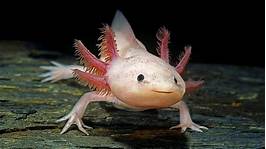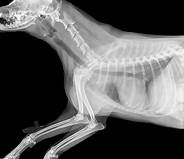Can You Keep an Axolotl as a Pet?
Axolotls are fascinating creatures that have captured the attention of many people due to their unique appearance and regenerative abilities. These aquatic salamanders, native to Mexico, possess an extraordinary ability to regenerate their limbs and even parts of their brains. With their adorable features and interesting biology, it's no wonder that many consider keeping an axolotl as a pet.

What Is an Axolotl?
Axolotls (pronounced "ack-suh-LOT-ul") are a type of salamander that spends its entire life as aquatic larvae, never transitioning to a terrestrial adult stage. They possess several remarkable features, including:
1. Permanent Gills: Unlike most salamanders, axolotls retain their feathery gills throughout their lives, allowing them to breathe oxygen directly from water. 2. Regeneration: Axolotls possess an extraordinary ability to regenerate their limbs, tails, and even parts of their brains. This remarkable trait has made them a subject of intense research in the field of regenerative medicine. 3. Unique Appearance: Axolotls have an elongated body with four slender legs, feathery gills, and a wide, flat head. They come in various color variations, including pink, white, black, and albino.
Can You Keep an Axolotl as a Pet?
Yes, axolotls can be kept as pets, but it requires a specific setup and a dedicated commitment to their care. They are not considered beginner pets, and prospective owners should be aware of their specific needs and requirements.
Environmental Requirements
Axolotls thrive in cool, freshwater environments. The ideal water temperature range is between 60 to 68 degrees Fahrenheit (16 to 20 degrees Celsius). They need a spacious aquarium, at least 10 gallons for a single axolotl, with a secure lid to prevent escapes. The aquarium should be equipped with a filtration system, a water cooler (if necessary), and a substrate that is safe for axolotls, such as fine sand or bare bottom.
Diet
Axolotls are primarily carnivorous and their diet consists mainly of live or frozen foods. Suitable food options include earthworms, blackworms, brine shrimp, small fish, and pellets specifically formulated for axolotls. They should be fed every other day or three times a week, depending on their age and size.
Health Care
Axolotls are generally hardy creatures, but they are susceptible to certain health issues. This includes fungal infections, bacterial infections, and parasites. Regular water changes and a clean aquarium environment are essential for preventing diseases. Axolotls should also receive annual checkups with a veterinarian who specializes in exotic animals.
Lifespan
With proper care and maintenance, axolotls can live for 10 to 15 years. They are relatively low-maintenance pets, but they require a commitment to their specific needs. Prospective owners should carefully consider whether they can provide the necessary care and attention for the entire lifespan of an axolotl.
Conclusion
Keeping an axolotl as a pet can be a rewarding experience. These fascinating creatures are unique, interesting, and have a remarkable ability to regenerate their body parts. However, before committing to owning an axolotl, it is crucial to understand their specific needs and requirements. Prospective owners should be prepared to provide a suitable habitat, a nutritious diet, and regular veterinary care to ensure the well-being and longevity of their axolotl.
Declaration: All article resources on this website, unless otherwise specified or labeled, are collected from online resources. If the content on this website infringes on the legitimate rights and interests of the original author, you can contact this website to delete it.





